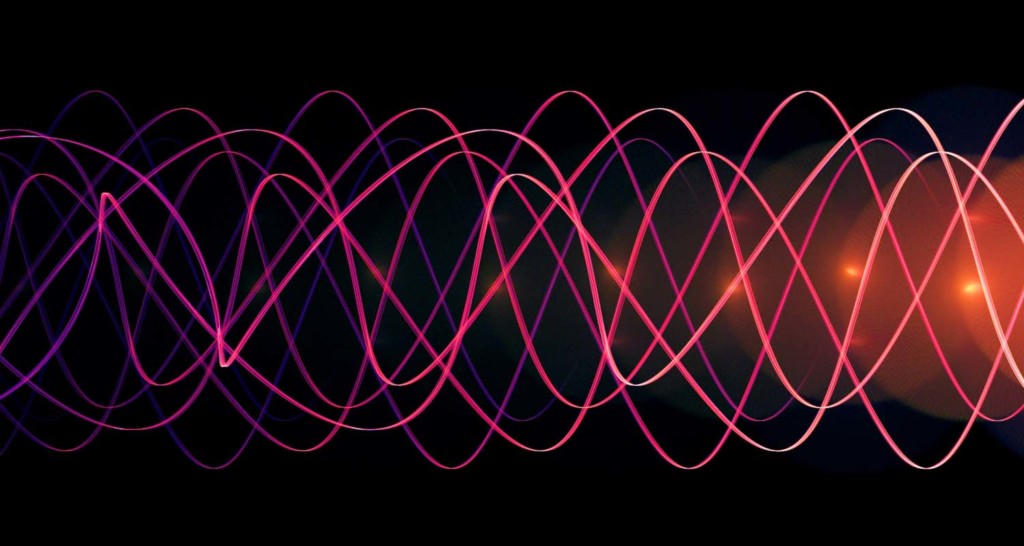
- Mitochondria, the battery packs of your cells, and how strong they are affects everything you do. What if you could charge up your mitochondria directly — in a sense, plug them in? PEMF therapy comes pretty close.
- PEMF therapy uses bursts of low-level electromagnetic radiation to heal damaged tissues and bone, to relieve injury-related pain, and even to stimulate organs.
- It’s a safe level of EMFs. The therapeutic frequency of PEMFs look a lot like the frequencies you encounter in nature, so your body knows how to deal with it. Most PEMF treatments and maintenance will fall in the 5-30 Hz range, which is less than you get from a thunderstorm.
- Research has demonstrated that PEMF healed bones faster, helped regenerate parts of the liver that had been removed, reduced pain from arthritis and more.
At Bulletproof, there’s a lot of talk about mitochondria, the battery packs of your cells. How many mitochondria you have and how strong they are affect everything you do — from performing better to living longer. There are ways to boost your mitochondria through diet and lifestyle. But what if you could charge up your mitochondria directly — in a sense, plug them in?
Pulsed Electromagnetic Field (PEMF) therapy comes pretty close. All by transferring energy, PEMF has been used to improve functions like:
- Rate of injury healing
- Immune function
- Sleep
- Depression
- Physical energy
- Bone healing and density
- Circulation
But does it work? Read on to find out the mechanism behind PEMF benefits, whether it’s harmful like the EMFs you hear about, and whether it can help you.
What is PEMF therapy?

PEMF therapy uses bursts of low-level electromagnetic radiation to heal damaged tissues and bone, to relieve injury-related pain, and even to stimulate organs.
The idea is that pulses at low frequencies will pass through the skin and penetrate deep into muscle, bones, tendons, and even organs to activate the cell’s energy and encourage its natural repair mechanisms.
PEMF is catching on as a non-invasive way to approach injuries, chronic pain, and even chronic conditions like depression and diabetes.
Wait, are EMFs dangerous?
You may have heard that electromagnetic fields (EMFs) that come from things like wireless routers, microwaves, and airplanes disrupt your biology. EMFs can alter your DNA[ref url=”https://link.springer.com/article/10.1007/s00420-003-0446-5 “][ref url=”https://www.sciencedirect.com/science/article/pii/S0167488904002228 “][ref url=”http://www.sciencedirect.com/science/article/pii/S0928468009000145 “][ref url=”http://www.sciencedirect.com/science/article/pii/S0047637403001258 “] and reconfigure your genes,[ref url=”http://www.sciencedirect.com/science/article/pii/S0928468009000169 “][ref url=”http://www.sciencedirect.com/science/article/pii/S1383571805000914”] which can leave your cells not really knowing what to do. That can result in a lot of havoc, ranging from being tired all the time or ending up with DNA damage and cancer.[ref url=”http://onlinelibrary.wiley.com/doi/10.1002/bem.10162/full”]
PEMF therapy isn’t the same thing. Frequency and duration make all the difference.
EMFs fall on a wide spectrum — everything from x-rays and satellites to your wireless headphones emit EMFs at different frequencies. High-frequency EMFs, like X-rays that register frequencies in the hundred quintillion Hz range (yes, that’s a number and it’s big) are the most disruptive to your body. That’s because they are ionizing — which means they have enough energy to break electrons off of atoms, which charges them. This changes the way your cells work.
Even non-ionizing EMFs in the middle frequency (example: microwaves register around ten billion Hz) range can cause changes in your DNA and disrupt your circadian rhythm.
The therapeutic frequency of PEMFs look a lot like the frequencies you encounter in nature, so your body knows how to deal with it. Most PEMF treatments and maintenance will fall in the 5-30 Hz range, which is less than you get from a thunderstorm.

What’s more is that, PEMF treatment is pulsed and brief, so you don’t have extended exposure like you would sitting under a cell phone tower all day. Most PEMF treatments last 10-20 minutes and deliver short bursts the whole time, instead of constant exposure. So, you can get all of the benefits of PEMF without the negative effects that come with man-made EMF sources like electronics.
Why PEMF therapy works

The idea behind it is that the energy pulses penetrate and stimulate cells at the injury site, and everywhere around it.
In an episode of the Bulletproof Radio podcast, PEMF expert Dr. Gary Ryan, known as “The Energy Doctor,” explains, “Based on a lot of research that was done at Yale, it is apparent that just about any pathology in the body is preceded by a drop in cell charge. Now we have technology that will reach down to the level of a cell that has lost charge and, due to the high intensity of the pulse, bring that pulse back to normal or a more normal situation, which allows it to replicate and produce a more normal cell.”
So, introducing a low-level electromagnetic field into the body can bring those charges back up and restore healthy electrochemical exchanges.
PEMFs stimulate every level of the body. You apply mats, pads, rings or paddles externally, and the electromagnetic pulses of energy penetrate the body at the cellular level. Your body then uses that energy to heal itself through its natural healing mechanisms. Depending on the extent of the issue, PEMFs can address a slight imbalance quickly, like a pulled muscle, or it can work to bring about a more substantial change over time, like restoring a sluggish organ system.
What science says about PEMF therapy
The mechanism sounds pretty convincing, but PEMF research under controlled conditions will uncover whether or not PEMF is effective. Here’s what scientists were able to demonstrate about PEMF therapy so far:
- PEMF measurably reduced pain and swelling following plastic surgery[ref url=”https://www.ncbi.nlm.nih.gov/pubmed/19371845″]
- A sizeable body of research shows that PEMF helps slow-healing tibial fractures fuse[ref url=”https://josr-online.biomedcentral.com/articles/10.1186/1749-799X-7-24 “][ref url=”https://online.boneandjoint.org.uk/doi/abs/10.1302/0301-620x.72b3.2187877?journalCode=bjj&”][ref url=”https://www.ncbi.nlm.nih.gov/pmc/articles/PMC2140080/”]
- A small study demonstrated that PEMF therapy reduces pain from chronic pain conditions and fibromyalgia[ref url=”https://www.ncbi.nlm.nih.gov/pmc/articles/PMC2670735/”]
- Animal studies show the potential of PEMF therapy in regenerating nerve fibers in the spinal cord and peripheral nerves, which is promising for the future of regenerative medicine[ref url=”https://www.nature.com/articles/sc19762″]
- In cell cultures, PEMF treatment seemed to activate lysozyme, which is a major step in the bone regeneration process.[ref url=”http://europepmc.org/abstract/med/7094473″]
- Treatment with PEMF improved osteoarthritis by keeping cartilage from breaking down[ref url=”http://www.oarsijournal.com/article/S1063-4584(03)00083-9/abstract”]
- PEMF impacted the growth of bone cells in cell cultures, which formed bone tissue in lab tests[ref url=”https://www.ncbi.nlm.nih.gov/pubmed/12111759″][ref url=”http://onlinelibrary.wiley.com/doi/10.1002/jor.20862/full “][ref url=”http://onlinelibrary.wiley.com/doi/10.1002/jor.1100180417/full”]
- In a small study, people with rotator cuff injuries went through PEMF therapy, and all participants had either reduced or eliminated symptoms.[ref url=”https://www.sciencedirect.com/science/article/pii/S0140673684922190″]
- Just one month of PEMF treatment improved pain and functional performance in arthritis patients[ref url=”https://ozonoterapia.ozotec.pt/wp-content/uploads/2016/12/Estudo-sobre-Magnetismo-Trock-1993.pdf”]
- PEMF therapy helped regenerate the liver faster in rats who had part of the liver removed[ref url=”https://www.tandfonline.com/doi/abs/10.3109/15368379109031404 “][ref url=”https://www.tandfonline.com/doi/abs/10.3109/15368379709009836”]
Where to get PEMF treatments

You can get PEMF therapy one of two ways: you can go to a professional, usually a physical therapist or chiropractor, or you can get PEMF equipment to use at home.
Currently, insurance doesn’t cover the cost of PEMF therapy, so prepare to pay $30-60 per session. If extended therapy is needed, usually the clinic will offer session packages that will save you some money over the course of your treatment. If you’re in the Santa Monica, California area, you can hit up Bulletproof Labs for PEMF treatments.
Or, you can get your own equipment. PEMF devices aren’t classified as regulated medical devices, so you don’t need to be a doctor or a chiropractor to buy a PEMF device. If you can afford it, you can get a PEMF mat, pad, or ring. Affording it is the tricky part. The cheapest PEMF mats go for $1,300 or more, and the prices go up from there. As with anything, you get what you pay for, and higher-quality devices run into five figures.
It’s completely reasonable to pay a couple hundred dollars for a series of sessions to treat a sore shoulder that’s been bugging you for decades, or to help a recent injury along.
PEMF therapy is one of those things you have to experiment with yourself to see if you notice improvements. A one-off treatment may not do much, but a full course might surprise you. With scientific backing and no side effects, it’s worth a chat with your chiropractor about PEMF therapy.









